Orenburg Nature Reserve. Pre-Ural Steppe#
Photos by Stanislav Sedov and Natalia Sudets, members of the AirPano Team that is a member of the global-geography Consortium.31 October 2018
with kind permission of AirPano
A steppe (prairie) is a vast grassland plin with almost no trees, but with the abundance of grass vegetation. Many nature reserves are created for the protection of these ecoregions. The most "steppe" nature reserve of Russia is the Orenburg Nature Reserve, which is divided into five sections. One of them is Pre-Ural steppe occupying 16.5 thousand hectares and being the largest part of the Orenburg Nature Reserve.
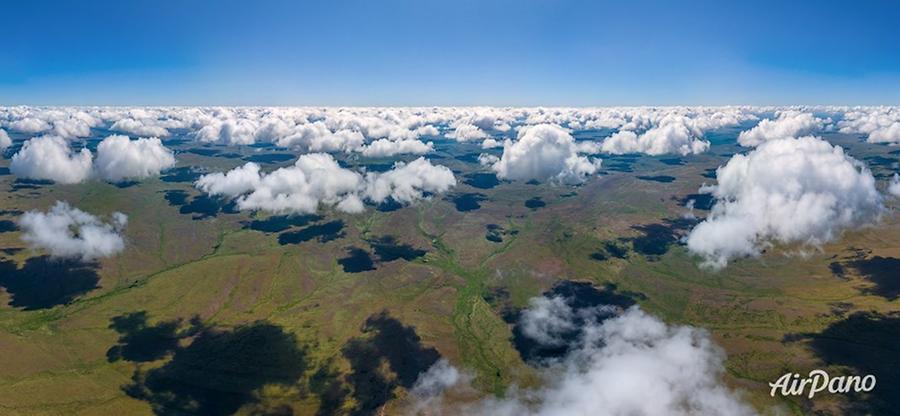
© AirPano
The landscapes of Pre-Ural steppe are quite various: you can see both lowlands and small hills, sandy cliffs and ravines. In spring, the ground is covered by the feather grass, irises, tulips and other vegetation: in total, there are around 250 species growing here. One of the most noticeable natural monuments is the Banditskiye mountains — a hillocky area with stone outcrops.
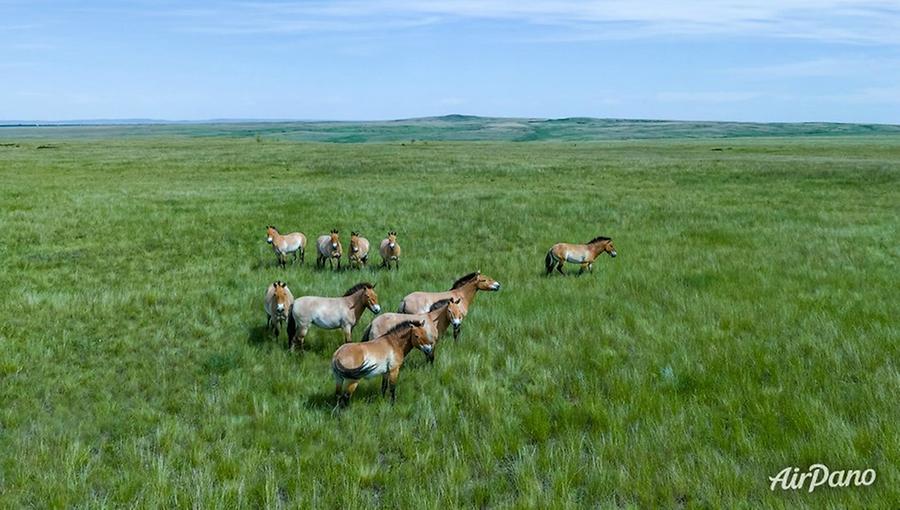
© AirPano
Pre-Ural steppe is the habitat of European hares, badgers, foxes, wolfs, roe deer and different species of birds. But the genuine claim to fame of this region is the Przewalski's horse living in the wildlife. This species is different to the domestic horse not only by its genetics (it has two additional pairs of chromosomes) but also by their appearance: these horses are short, stocky, always light-brown in order to match the colours of the steppe, with a short as if cut mane, faintly striped legs and a brush-like tail.
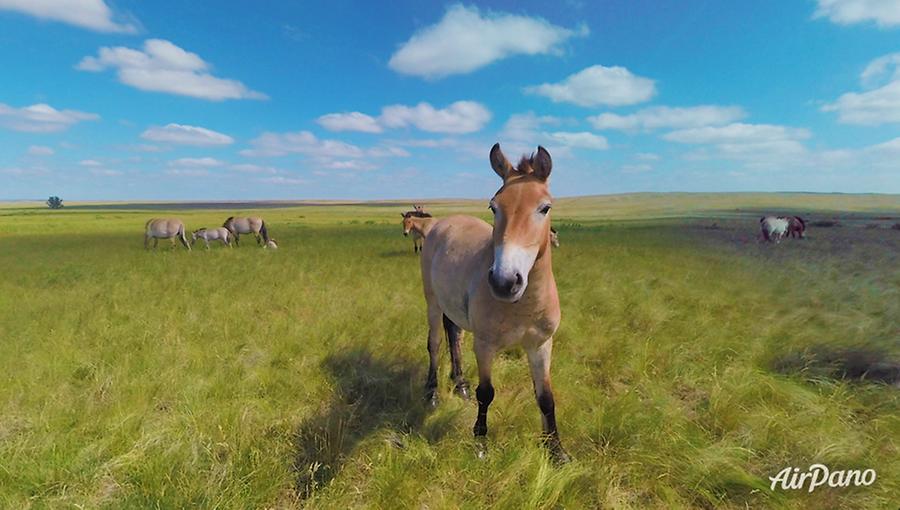
© AirPano
These graceful animals used to live in the steppes of Eurasia hundreds of years ago, but eventually, the population declined and almost disappeared from the natural habitat — not only in Southern Ural but within the whole area of the Przewalski's horse range. At the dawn of the 20th century, several dozens of wild horses were delivered to the European zoos from Central Asia in order to help to regenerate the population of the species that was at the edge of the extinction.
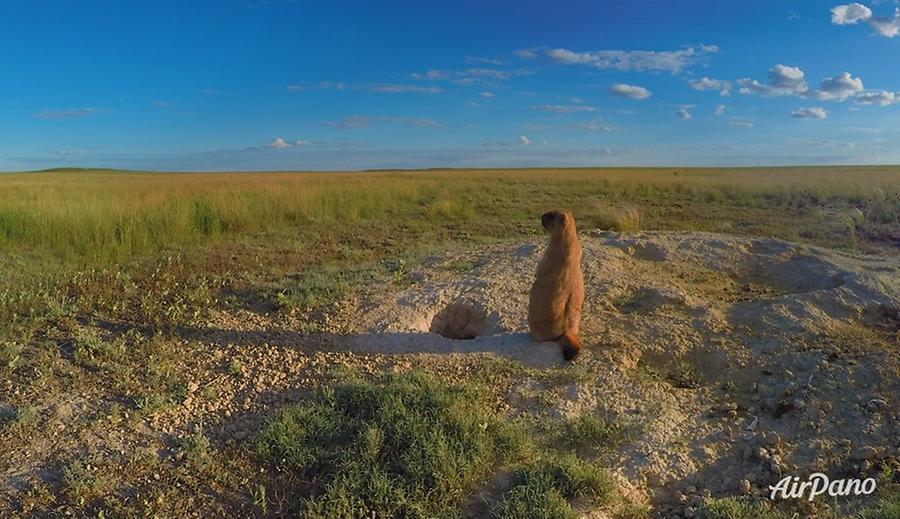
© AirPano
Different countries of the world have taken measures to return the Przewalski's horses back to the wild. In Russia, the Orenburg Nature Reserve was the first one to adopt these measures. The presence of these animals is extremely important for the maintenance of the natural balance.
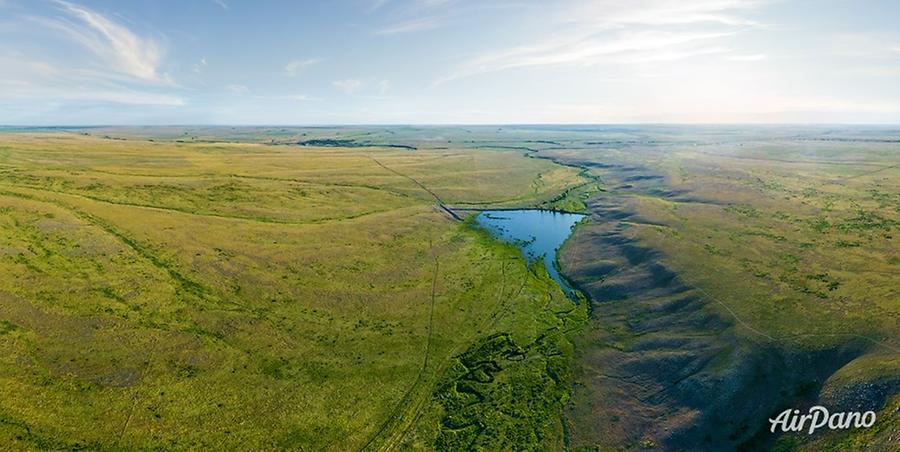
© AirPano
In 2015, the territory of Pre-Ural steppe became completely enclosed by the fence in order not only to protect the animals from poaching but also from cross-breeding with domestic horses.
It took them some time to adapt to new conditions and create families consisting of a leader and several female horses. And a long-awaited event occurred in spring 2018: the first free-ranging foals were born on the territory of Russia.
Have a look at these rare animals and their picturesque natural habitat!
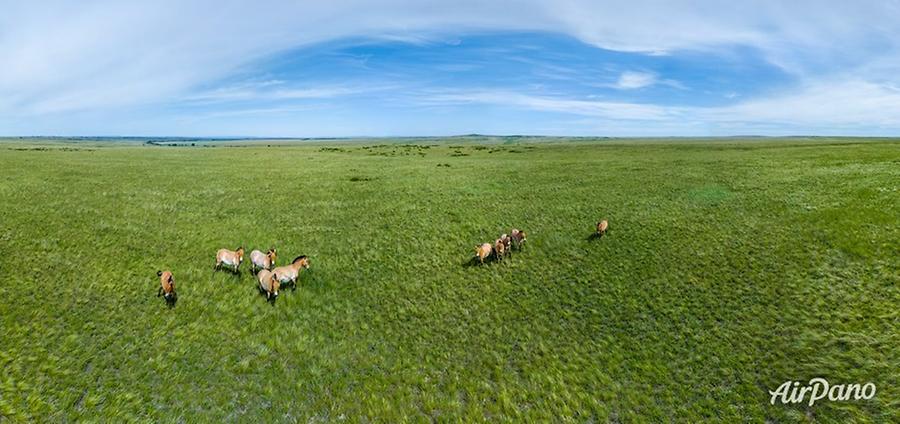
© AirPano
AirPano team would like to express our gratitude to the administration of the Orenburg Nature Reserve and personally Rafilya Bakirova, Zharkikh Tatiana Leonidovna, Petrov Vladimir, Nemalcev Dmitry and Kuznecov Vyacheslav for help with organisation of shooting the Pre-Ural Steppe.
17 panoramas of Orenburg Nature Reserve. Pre-Ural Steppe